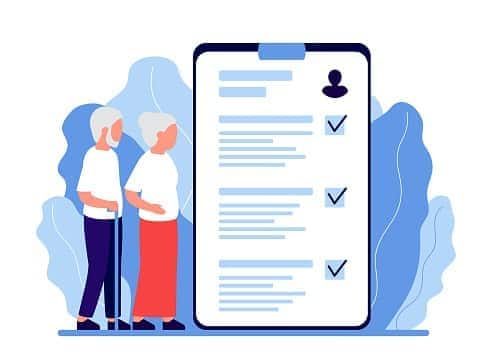PIP vs. MedPay insurance: What's covered by each
Both PIP and MedPay cover injuries to you as the driver and any passengers in your car in an accident, no matter who is at fault. However, there are some differences in terms of what they cover, such as how they cover medical expenses resulting from accidents.
What personal injury protection (PIP) covers and how it works
PIP insurance provides comprehensive benefits that go beyond simply paying medical bills after an accident. It's comprehensive no-fault coverage that is available immediately after an accident. PIP coverage is required by law in no-fault car insurance states.
PIP coverage varies between states, but can include:
- Medical expenses: Ambulance/paramedic, doctors and surgeons, hospitalization, nursing care, medication, drugs and medical supplies, psychiatric care, imaging, laboratory tests, rehabilitation, prostheses, dental care, optical treatment and chiropractic services. Not all states require 100% reimbursement, and in some cases there is a deductible.
- Funeral expenses: Ceremonies, burial expenses and cremation.
- Lost wages: Some or all of wages lost during recovery. PIP may also cover the cost of temporary employees if you're self-employed.
- Child care and household expenses: PIP can pay for service providers when injuries make it impossible to care for children or maintain the home.
- Survivors’ loss: PIP can cover the breadwinner’s income for surviving dependents.
When you’re injured in an accident, you file a claim with your own insurer for PIP benefits – there’s no need to deal with the other driver’s insurer. Notice that PIP does not compensate you for pain and suffering.
In no-fault states, you can sue the other driver for these and other losses, but only when injuries are deemed severe or when medical expenses meet pre-defined thresholds – you can’t claim pain and suffering for minor injuries.
What medical payments coverage (MedPay) covers and how it works
Medical payments coverage (MedPay) is similar to PIP, but much less comprehensive.
MedPay covers medical expenses for the insured, other drivers listed on the insurance policy, members of the insured’s household and passengers.
Depending on your state laws, coverage, and insurance company, MedPay can supplement your health insurance coverage or function as primary medical coverage after an accident. If it’s considered supplemental, your health insurance would be used first to cover your injuries, then the MedPay would kick in for deductibles and co-pays. If it’s primary, MedPay is tapped first to cover the immediate medical costs, and then your health coverage takes care of the excess or ongoing expenses.
MedPay is designed to complement standard liability coverage. Some drivers use it to “beef up” their PIP policies. While the coverage is limited, MedPay has a couple of advantages that make it worth considering:
- Pays medical costs quickly, regardless of fault. In a tort state, you’re responsible for your medical costs if you’re at fault. If the other driver is at fault, you may have to fight to get your losses covered. In court, this can take months or even years.
- MedPay has no deductible or co-pay, unlike most health insurance plans.
- You’re covered if injured as someone else’s passenger, if you’re taking public transportation or if you’re injured by another driver while walking or cycling.
What PIP and MedPay don't cover
PIP and MedPay don't cover:
- Injuries to the driver or passengers of the other car
- Property damage to either your car or the other driver's car
Additionally, MedPay doesn't cover many things covered by PIP, including:
- Lost wages
- Funeral costs
- Other costs due to the injury, like childcare or household services
- Survivor benefits
PIP and MedPay state-by-state availability and requirement
PIP is required in all no-fault states:
- Florida
- Hawaii
- Kansas
- Kentucky
- Massachusetts
- Michigan
- Minnesota
- New Jersey
- New York
- North Dakota
- Pennsylvania
- Utah
In addition, PIP is mandatory in Oregon, Delaware and Maryland. When required in a tort state, PIP does not limit the insured’s ability to sue an at-fault driver.
MedPay is required in two tort states, Maine and New Hampshire.
In all other states, both PIP and MedPay are optional, or may not be available at all.
PIP and MedPay insurance cost comparison
MedPay is relatively inexpensive, adding about $20 per year to your premium. This is because its use is limited and its maximum payout is low, in the range of $5,000 to $10,000 per person.
The cost of PIP coverage varies a great deal between states, but the average nationwide is $191 a year. This makes sense when you consider the wide range of mandatory coverage that must be purchased. The chart below shows required coverage for the 12 no-fault states.
Limits range from a low of $2,500 per accident to unlimited medical expenses and permanent injury benefits of $250,000. Because PIP is just one part of the mandatory coverage in no-fault states, its cost isn’t easy to break out. However, it's possible to compare the total average cost of auto insurance in no-fault states and tort states.
- Five PIP-mandatory states, Delaware, Florida, Maryland, New Jersey and Michigan, have average costs that are significantly higher than the national average. Delaware’s are 21% above average, Florida’s premiums are 25% higher, Maryland’s are 21% over, New Jersey’s are 44% higher and Michigan’s are 107% above average, at $2,378 per year.
- Hawaii, Kansas, New York, North Dakota and Utah enjoy much lower than average premiums: Hawaiians pay 21% less, Kansans 14%, New Yorkers 21%, North Dakotans 9% and Utah drivers pay 20% less.
- Drivers in Kentucky, Oregon, Massachusetts, Minnesota, Pennsylvania all pay the national average or very close to it.
According to the Insurance Information Institute, fraud and too-generous payouts have become an issue in several states, including New York, Florida and Michigan. They're probably a factor in the high costs paid by drivers in those states. However, these figures are the total cost of all coverage in states where PIP is required. Optional PIP, added to a standard insurance policy, can be highly affordable, ranging from $20 to $50 a month.
Minimum PIP coverage levels required by state
| State | Coverage |
|---|---|
| Delaware | $15k per person, $30k per accident, $5k funeral |
| Florida | $10k per person |
| Hawaii | $10k per person |
| Kansas | $4.5k per person medical, $4.5k rehab, $2k funeral, $900 per month income, $25 per day for household |
| Kentucky | $10k per person |
| Maryland | $2.5k per accident |
| Massachusetts | $8k per person |
| Michigan | Coverage options include, $50,000, $250,000, $500,000 or lifetime PIP options or to opt out of PIP coverage. To opt out, you must have Medicare Parts A & B and any other household members have an auto policy with PIP or health insurance that covers auto accidents. To get $50,000 of PIP, you must be enrolled in Medicaid and household members must have auto policy with PIP, be on Medicaid or another health insurer. |
| Minnesota | $20k medical, $20k loss of income |
| New Jersey | $15k per person, $250k severe / permanent injury, $2k funeral, 80% lost income up to $2k per month, $25 / day household |
| New York | $50k per person, $2k funeral, 80% lost income to $2k/month, $25 per day household |
| North Dakota | $30k per person |
| Oregon | $15k per person |
| Pennsylvania | $5k per accident |
| Utah | $3k per person, $1.5k funeral, $3k death benefit, $250 / week lost income, $20 / day household |
Doubling up: Does buying both PIP and MedPay make sense?
If you live in a no-fault state, you’re already paying for PIP. Adding MedPay may make little sense because the scope of coverage is narrower than that of PIP.
However, MedPay is cheap, and there are some benefits that you might want. For example, MedPay’s lack of deductible can be a plus, especially if your health insurance policy has a high deductible.
If you have good health insurance, you may not need PIP or MedPay. But there are situations where it may still help.
"Your having health insurance is not going to benefit other people in your car if you have an accident," says Kevin Lynch, an associate professor of insurance at The American College in Bryn Mawr, Pennsylvania
In addition:
- Health insurance may not cover all your expenses related to a car accident; there are still out-of-pocket costs such as deductibles and coinsurance.
- PIP also offer lost income reimbursement; even if you have short- or long-term disability insurance it may not cover all lost income, and PIP is non-taxable.
- Health insurance doesn't cover funeral expenses, nor does it cover household costs like childcare while you recover.
"It's not the type of coverage that someone needs to get overly excessive with, but for small health claims related to a car accident, it is a great benefit to have,” says Brooks Gregory, a financial adviser with Peachtree Planning in Atlanta.






